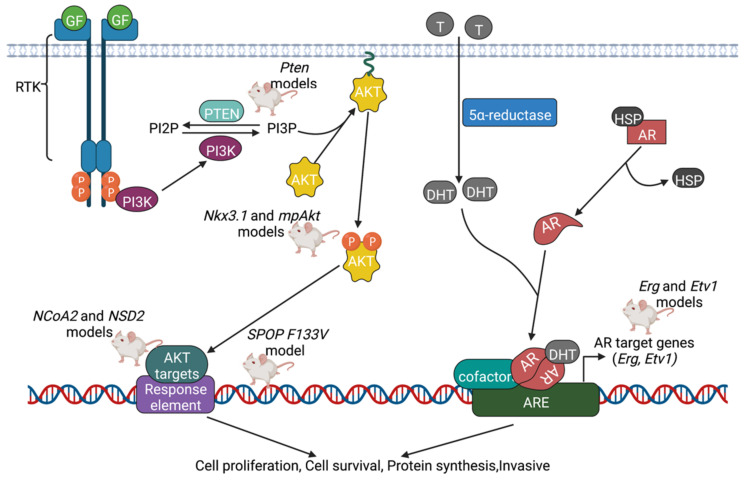Figure 3.
Summary of PCa knockout models driven by PI3K and AR signaling pathways. Several signaling pathways have been identified that play a role in the development of PCa. To explain the phenotypes of each KO model, researchers propose one or more signaling pathways that could be altered in the model that they developed. In the PI3K pathway, once activated by Ras protein, PI3K phosphorylates PIP2 into PIP3, leading to the tethering of Akt/PKB and Rho-GEFs to the plasma membrane. Pten reverses the actions of PI3K by converting PIP3 back into PIP2, and thus plays a key role in inhibiting cell growth and proliferation. In addition to the PI3K pathway, another oncogenic signaling pathway involves the nuclear receptor known as AR. In the presence of androgens such as testosterone and dihydrotestosterone, Heat Shock Protein (HSP) is released from AR, and AR binds the androgen in the cytoplasm. ARs translocate to the nucleus and undergo dimerization; the dimer then acts as a transcription factor by binding to androgen response elements (AREs). With recruitment of other cofactors, this again leads to increased cell proliferation, cell survival, and protein synthesis. Created with BioRender.com.

